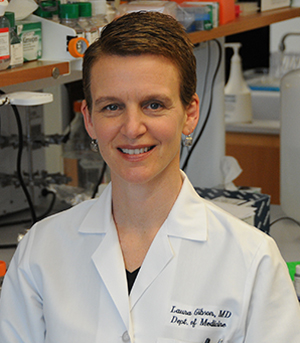Wide variation in the amount or infectiousness of SARS-CoV-2 among people in early stages of COVID-19 may be an explanation for the phenomenon of “superspreaders,” according to a study by UMass Chan researchers and collaborators from several institutions that was recently published in Nature Microbiology .

The research provides an in-depth view of SARS-CoV-2 infection through serial viral testing by several methods: PCR test, antigen test and viral culture to measure viral growth.
Nasal and saliva samples were obtained in late 2020 through early 2021 from 60 people at University of Illinois at Urbana-Champaign who were asymptomatic or mildly symptomatic for COVID-19. Participants had either received a new positive PCR result in the preceding 24 hours or had been exposed to someone with COVID-19 within the previous five days. The study was supported by the National Institutes of Health’s Rapid Acceleration of Diagnostics (RADx) initiative.
The term superspreader refers to an infected individual who contributes a large, disproportionate share of SARS-CoV-2 transmission.
“Until this study, the reason why some people seem to transmit the virus to others more extensively than others hadn’t been well explained,” said co-author Laura L. Gibson, MD, associate professor of medicine at UMass Chan. Dr. Gibson was formerly co-lead of the RADx Clinical Studies Core with David D. McManus, MD'02, MSc'12, the Richard M. Haidack Professor in Medicine and chair and professor of medicine.
Based on results of the study, Gibson said, COVID-19 appears to be like most other infectious diseases in which some people get sick and some people don’t from the same infection. This clinical variability depends on many factors, including differences among pathogens, individual differences in immune responses or even location of the virus in the oral or nasal cavities.
The current study was performed on individuals with no known SARS-CoV-2 immunity. They had not been previously infected, and since the study took place before widespread vaccine availability, none had received a COVID-19 vaccination.
Researchers measured dynamics of the SARS-CoV-2 virus in several ways through daily sampling of participants for up to 14 days.
First, they tested nasal swabs using the sample from one nostril for a PCR test, which detects viral genetic material whether the virus is dead or alive, and from the other nostril for an antigen test, which detects viral proteins. The PCR nasal sample was also tested in viral culture, a laboratory analysis that detects virus that is alive and replicating and therefore could spread to the next person.
Gibson explained, “The unique aspect of this approach was to use several testing modalities on samples obtained on the same day and repeating those measures daily over the whole course of SARS-CoV-2 infection.”
To analyze the data from these samples, researchers used mathematical models to map the longitudinal dynamics of viral shedding based on data from PCR tests and viral culture performed over the course of infection. The models described patterns of not only viral expansion and clearance but also viral shedding, which generally indicates infectious activity as virus is released from the body.
“Daily sampling of participants provided robust granular data for this modeling,” said Gibson. “We found that individuals differ significantly in terms of viral infectiousness, and that such heterogeneity likely depends on human as well as viral factors and supports the idea of super spreaders.”
Researchers also compared PCR test results in saliva and nasal samples and found surprising differences between the two anatomic locations, even though they are connected at the back of the throat. “We did find virus in saliva at least one day before nasal samples in about 85 percent of participants,” said Gibson.
The paper’s authors did not suggest that saliva testing was better than nasal testing, “But it supports the argument that if you want to detect infected people sooner, you might be better to test saliva—with a PCR test authorized for that use—rather than nasal samples. But there are a lot of caveats with that approach, and people should use diagnostic tests only with the specific sample type for which they are designed.”
Although the study took place when alpha and previous variants were circulating, Gibson said the general conclusions would probably still apply to other variants because researchers didn’t see differences in viral dynamics based on variants evaluated in this study.
Additionally, the study found differences between participants that were not fully explained by the virus test results, Gibson said. “The overall finding was that people vary in the amount or duration of virus in the samples, no matter how the virus is tested, and not all that variation was explained by the virus measurements. Human factors—for example level of SARS-CoV-2 antibodies in the nose—are likely important and could be measured as a clinical tool.”
Other UMass Chan Medical School researchers who authored the paper along with researchers at the University of Illinois at Urbana-Champaign, Johns Hopkins School of Medicine and National Institute of Biomedical Imaging and Bioengineering were: Alyssa N. Owens, PhD, research coordinator; John P. Broach, MD, MPH, MBA, assistant professor of emergency medicine; Bruce A. Barton, PhD, professor of population & quantitative health sciences; Peter Lazar, application database developer; and Dr. McManus.
Related UMass Chan news stories:
Participants sought for new digital study of at-home COVID-19 tests
New research shows value of at-home antigen tests in slowing spread of COVID-19